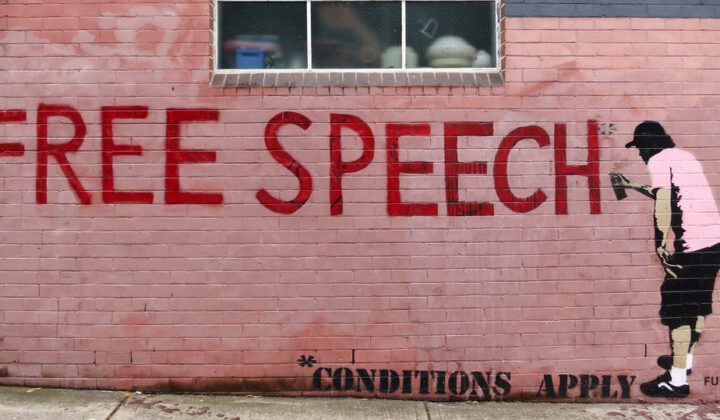Donald Trump is back.
This past week, Trump returned to Washington to deliver a speech at the America First Policy Institute’s agenda summit. It didn’t take long for him to revive old lies about the 2020 election and offer new ones about the January 6th committee.
“Everything this corrupt establishment is doing to me is all about preserving their power and control over the American people,” the former president told the crowd. The solution to the corrupt plot is obvious: do everything in your power to ensure your enemies are defeated and disempowered. That process is well underway.
Donald Trump is a revolutionary figure—figuratively, in that he redefined what it means to be a Republican, and also literally, in that he tried to orchestrate a coup. But the revolution he led has taken on a life of its own.
American democracy is in the midst of a massive revision, spearheaded by Trump’s devotees to centralize power around themselves. If even a fraction of the proposed changes are carried through, American democracy would be fundamentally remade. It starts with correcting what they failed to do in 2020—overturn the results of an election that went against them.
Making Election Results Malleable
The tactics the Trump campaign exploited to stay in power are maturing into something far more likely to be successful next time. January 6th is looking like a trial run.
First, a bit of history about the attempt to overturn the 2020 election.
Trump’s attempt to stay in power started with the courts, which quickly threw out the outlandish cases alleging Venezuelans hacked our voting machines and illegal immigrants voted en masse.
Then Trump went after the election certification process. Trump’s lawyer, John Eastman, lobbied Pence to accept a radical reading of his duties outlined in the Electoral Count Act and reject Biden’s electors in key states.
This so-called “fake electors” scheme relied on Trump loyalists claiming to be their state’s legitimate electors for the Electoral College. On January 6th, Pence was supposed to use his authority under the Electoral Count Act to count them instead of the real electors, delivering the presidency to Trump.
Meanwhile as the mob descended on the Capitol, Secret Service agents tried to whisk Pence away, almost preventing him from certifying the election results. Now, the Secret Service is under investigation for its involvement in the plot, but investigators can’t gain access to their text messages from January 5th and 6th because the Secret Service destroyed all records of them.
All of these efforts are dangerous, but next time won’t be so haphazard. The tactic most likely to overturn a presidential election runs through state legislatures.
In the Moore v. Harper case that the Supreme Court will hear this fall (which I wrote about here three weeks ago), the justices will be asked to determine whether or not North Carolina Republicans can carry through with an extreme partisan gerrymander despite the fact that it violates the state constitution. If the justices rule in favor of North Carolina, it would open the floodgates to more extreme gerrymanders in the future.
The greater risk of the Moore v. Harper decision, though, is in the bizarre legal reasoning it relies on: Independent State Legislature theory (ISLT). That theory contends that the Constitution gives state legislatures almost complete control over the election process with no checks and balances. If the state legislature wants to pass a bill granting itself the right to overturn an election if they claim that there was widespread voter fraud, there’s little to stop them.
In 2020, Biden won five states where the legislatures were controlled by Republicans. They would have had a strong incentive to tamper with the results, and the Moore v. Harper decision and Independent State Legislature theory could give them the opportunity to do so in the future.
The Rise of State Power
Independent State Legislature theory and the Moore v. Harper decision are part of a larger trend to transfer power to states. Resurrecting long-settled debates about the relationship between state and federal governments, practices like nullification and secession are back on docket.
In Texas, the state GOP released its new party platform last month, refuting Biden’s presidential victory and offering a window into what may be to come. It is now their outright goal to, among other things:
- Hold a referendum on seceding from the United States,
- End the direct election of senators,
- End the federal ban on machine guns,
- Resist the “Great Reset”,
- Institute a nationwide ban on abortion,
- Abolish the Federal Reserve,
- Recognize homosexuality as an abnormal lifestyle choice,
- Call a Convention of States to reduce the power and jurisdiction of the federal government.
And it’s not just Texas that is pushing for secession. National Divorce—the popular term for secession among supporters—is having a moment. Rep. Marjorie Taylor Green flirted with the idea on Twitter; Rush Limbaugh said the US was trending towards it before he died; and Ben Shapiro proposed it for California. Americans are surprisingly open to the idea: 52 percent of Trump voters and 41 percent of Biden voters support their states seceding, according to a poll by the University of Virginia.
Media figures and politicians see the cracks emerging in our federal system, and seem willing to exploit it.
Purging the Bureaucracy
As the states rise, the federal government falls.
During Donald Trump’s tenure as president, he learned the hard way that presidents don’t have all the power of a CEO. Undeterred, he did his best to ensure that any aspect of the federal government he didn’t like but couldn’t do away with was as ineffectual as possible.
On the campaign trail, Trump promised “to get rid of [the EPA] in almost every form.” And under his oversight, the agency shrunk, rolled back environmental protections, and slowed work to a halt. It was a part of his culling of the federal bureaucracy, a campaign promise to “drain the swamp” that took aim at agencies from the IRS to the Census Bureau. Shortly after Trump took office, then-chief strategist Steve Bannon described the Trump administration as in a battle for the “deconstruction of the administrative state.”
Nevertheless, time and time again, Trump’s craziest ideas were held back, slow-walked, defied, or rebuked by career officials. Fed up with the “deep state” ruining his agenda, Trump signed an executive order called Schedule F two weeks before the 2020 election.
It was the culmination of years of work, detailed in an Axios report by Jonathan Swan, to finally force the federal government into submission.
The executive order would allow the president to reclassify about 50,000 civil servants as Schedule F employees, a new category that would strip them of their employment protections. Normally, the president can appoint about 4,000 senior positions to lead our civil service of about 2 million—already a massive sum. But with Schedule F, the president could increase that by an order of magnitude.
Trump planned a purge of the bureaucracy for his second term, but Biden’s victory put that plan on hold. Biden rescinded the order a few days after taking office.
That’s not the end of the story, though, with Trump as the most likely Republican nominee for president in 2024. Schedule F may come back, leading to a massive loss of institutional knowledge in the federal government and the politicization of our civil service. Our government would become less effective if Schedule F is imposed, but that’s the point.
The Revolution in American Democracy
The political proposals moving through the country represent an impending revolution in American democracy. They are casting into light just how much our democracy is held together by informal practices and conventions, precedents and ideas about proper behavior. A willingness to accept defeat with grace is, evidently, a virtue we took for granted.
That fate of our country lies in the people’s willingness to defend it. And while it may be difficult to recognize the challenges we face and conclude that American democracy is fit to weather the storm, we’ve made it through worse before. President Lincoln, guiding the country through the greatest crisis in our history, commented “I am a firm believer in the people. If given the truth, they can be depended upon to meet any national crisis. The great point is to bring them the real facts.”





